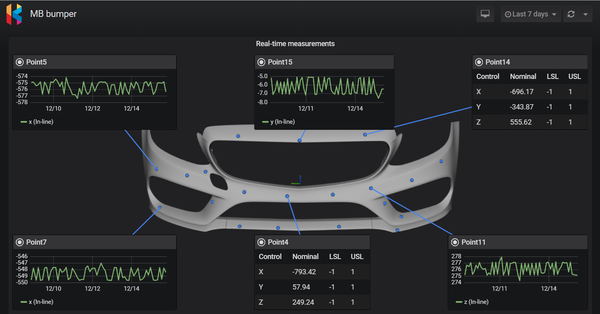What is the difference between Industry 3.0 and Industry 4.0?
You are either familiar with Industry 3.0 & Industry 4.0, or maybe you’re hearing the terms for the first time. This article will go over the basic components and differences between the two. We are in a new era of manufacturing, and companies either large or small are converting from Industry 3.0 to Industry 4.0. Why is this topic becoming so relevant today? Well, for starters, the global industry 4.0 market accounted for $68.2 billion in 2021 and is predicted to achieve a market size of $261.9 Billion by 2030.
Quick History 101 Lesson:
18th Century, England; James Watt invented the steam engine, revolutionizing the manufacturing industry and coining the term “Industry 1.0”. The second Industrial Revolution started in the late 1800s after the expansion of electrical technology thanks to a man by the name of, Thomas Edison. These monumental inventions that are sometimes taken for granted but are the origin of the mind-blowing technology we all use today. And so, the story begins:
What is industry 3.0?
The path to Industry 3.0 was made possible by the introduction of computers in the mid-1900s, known as the “Digital Revolution”. Computer technology, electronic systems, and automation became the dominant force in the industrial market, which was the catalyst for Industry 3.0. Old factories became automated and shifted from analogue and mechanical systems to electrical and digital systems. The process began through partial automation, which was achieved through simple computers and PLCs (programmable logic controllers). Machines could now be controlled much more efficiently, reducing human intervention to a minimum. This was an enormous step forward compared to series production, as engines were far more efficient, and we were able to rely more on automated processes on the assembly line to perform human tasks. Ultimately, Industry 3.0 automated processes on the production line, replacing blue-collar jobs with white-collar jobs.
What is Industry 4.0
Here is where a simple “google search” may not do you any good, as there are several different meanings and definitions of “Industry 4.0” out there. Industry 4.0 is the revolution happening today, constantly adapting and changing to mold the future of global manufacturing. This is a relatively new concept, to give you an idea, companies such as Amazon and Tesla are using Industry 4.0 technology and have still not fully integrated it into their business model. The common explanation of Industry 4.0 is “the intelligent networking of machines and processes in the industry with the aid of information and communication technology”. For those still scratching their head, this means the production process is now fully automated, 100% eliminating human error from the equation compared to Industry 3.0. “Digital transformation” is the integration of digital technology into all fields of business, essentially changing how companies operate and deliver value to the end user. The so-called “Holy Grail” of Industry 4.0 is implementing digital transformation wherein products are autonomously manufactured, monitored, and delivered using software processes without the intervention of humans.
Key Differences of 3.0 & 4.0
| Industry 3.0 | Industry 4.0 |
|---|---|
| Retrospective decision-making and manual actions | Real-time decision-making and autonomous actions |
| Automated processes using logic processors and information technology, not yet avoiding human error or interaction. | Automatizes vast quantities of data directly to the production floor, providing real-time data without any human interaction. |
| Business data is stored separately, making it difficult for other departments within the company to access and understand the data in real time. | Immediate response to business data in one centralized system, avoiding potential defects or issues before they occur. |
| Automated machines | Autonomous machines |
Fortune 500 companies are working diligently to automize their processes and reach the “Holy Grail” of Industry 4.0 technologies. Achieving the Holy Grail means companies can automatically take a sales order and schedule, operate, and deliver the order with zero human intervention. Examples of where Industry 4.0 could be implemented are endless, anywhere from vehicles, medical equipment, home building, retail designs, and the list goes on. Let’s be honest, robots and computers are far more efficient and reliable than humans regarding certain tasks. The functionality of Industry 4.0 brings us to a new paradigm of how we operate day-to-day business operations. There is still a lot more to come while Industry 4.0 evolves, sit back and enjoy the ride!




